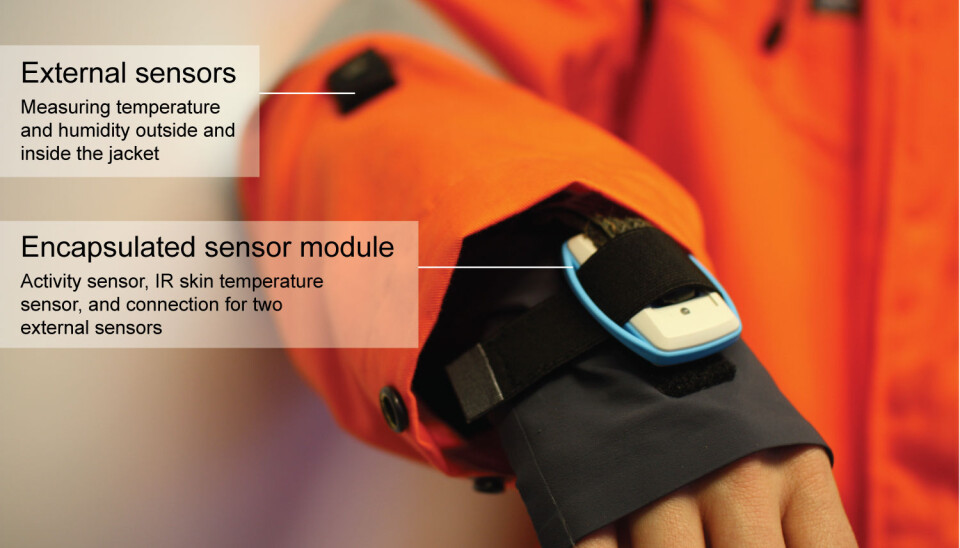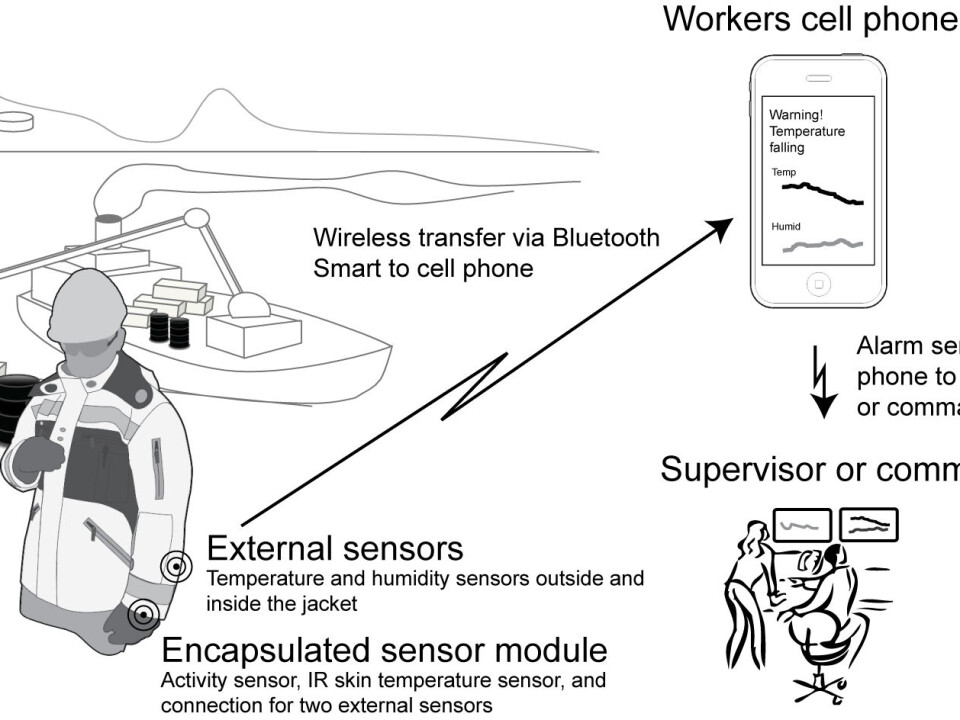An article from Norwegian SciTech News at SINTEF

Intelligent clothing for extreme weather
Norwegian laboratories are developing technical clothing that can “sense” how your body is responding. This will make working under extreme weather conditions safer.
Denne artikkelen er over ti år gammel og kan inneholde utdatert informasjon.
The aim of this project, called SmartPro, is to advance the development of clothing for work in extreme weather conditions that is functional, warm and comfortable. And, not least, intelligent. ‘Intelligent’ means that advanced sensors integrated into items of clothing will monitor the physiology of those wearing them and provide warnings if the stresses on the body become too great.
“We’re well aware that the oil industry is pushing the boundaries further and further north”, says Øystein Wiggen at SINTEF. “And that in the future the sector will be as active in the Arctic as it is in the North Sea today. People will be working under extreme weather conditions”, he says. “It will pay to be prepared with effective systems for ensuring that workers are protected and safe. Safety is the industry’s first priority, and the Arctic will expose workers to new and more extreme challenges”, says Wiggen.
Wiggen is a physiologist and one of the researchers who has been working on the ColdWear concept since 2008. He and his colleagues are now taking the concept one step further and are advancing the development of a jacket that can monitor its wearers under Arctic conditions.
Thirty human test subjects
This autumn, 30 human test subjects will undergo a series of severe laboratory tests under the watchful eyes of research scientists. The tests will provide researchers with key physiological data on how the human body withstands the types of stresses it is exposed to under conditions of extreme cold. Data from the sensors integrated into items of clothing will then be used to develop an algorithm that will enable the clothing in question to transmit a warning when the stresses on the body become too great.

“The sensor system and algorithm will be developed by our colleagues at SINTEF ICT in Oslo. They are specialists in the instrumentation required to take measurements under extreme weather conditions, and represent a key partner in this project”, says Wiggen.
Temperature and humidity will be monitored by sensors fitted both on the inside and outside of the clothing. Skin temperature will also be measured. Body movement is monitored by a device that combines data from an accelerometer, a gyroscope and a digital compass/magnetometer.
“Our aim is to identify the connection between the data recorded by all these sensors and the stresses to which the physiologists say the body is being exposed”, says researcher Hanne Austad at SINTEF ICT. “This will form the basis of the algorithm that will trigger the warnings”, she says.
The idea is that these sensors will communicate via Bluetooth with a smart phone or other Bluetooth device so that the work supervisor can be notified if the need arises.
Challenging assignment
When the sensor experts have done their job, a new group of laboratory subjects will selected to see if the system that SINTEF ICT has developed works in practice and provides the warnings needed if the stresses on the body become too great.
“This may sound easy in theory, but in practice we know that we will be faced with challenges in the measurement process because different people have different limits of tolerance. We also know that the body releases heat that moves from place to place while work is being done. This phenomenon may interfere with the measurements that are intended to provide precise descriptions of the external temperature.
While the Norwegian researchers are working to document the key physiological parameters and develop the sensors designed to monitor them, a team of Finnish scientists at the Finnish Institute of Occupational Health will be working on another aspect of the project.
“They will be developing a ‘super glove’ specially designed to provide thermal protection. It will be fitted with an in-built source of heat combined with a ‘smart’ design. In other words, the researchers will be aiming to come up with the perfect glove. Many people have tried this before, so far without success”, says Wiggen.
“We are developing this project one step at a time in order to create a solid foundation for the use and application of advanced, high-tech work clothing. In this way we are demonstrating the need for, and potential of, intelligent clothing so that it can become universally available in the future”, he says.
-------------------------------------
Read the Norwegian version of this article at forskning.no



































